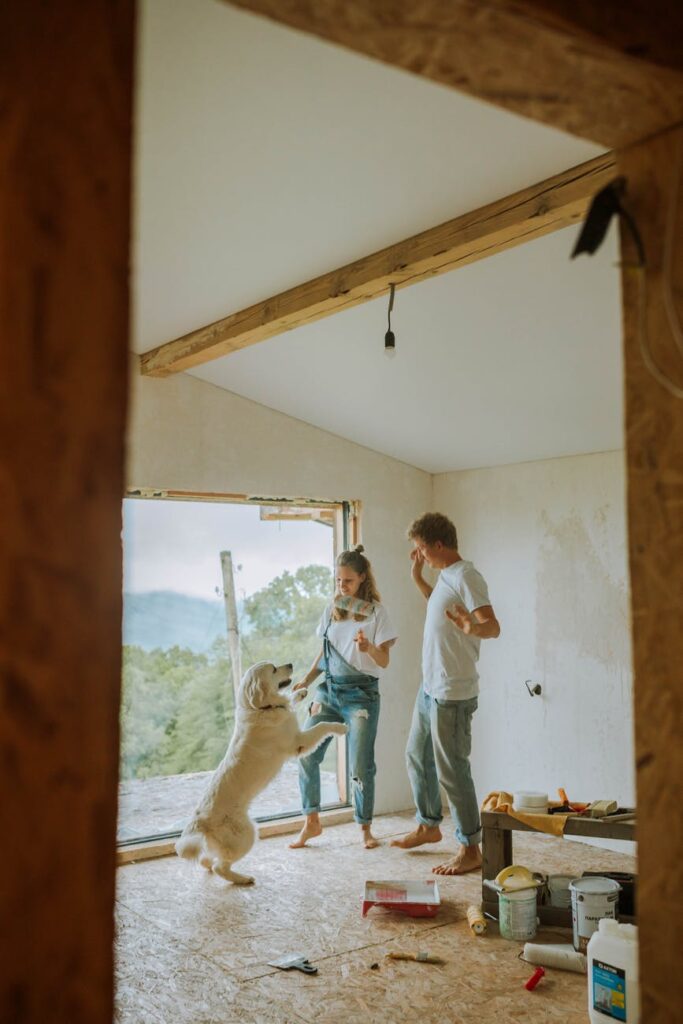Siding plays a pivotal role in safeguarding your home against the elements, while also defining its visual appeal. In regions where weather patterns can be harsh and unpredictable, the right siding is not just a cosmetic choice, but a shield protecting your most valuable asset.
Consider Before a Siding Replacement:

Whether battered by wind, rain, or the relentless sun, the siding bears the brunt, preserving both the structure and the comfort of your home. Thus, selecting the appropriate siding material and professional installation is essential. This blog will cover essential factors to consider before starting this project.
1. Assessing Your Home’s Current Siding Condition
Before jumping into the world of new siding, it’s important to evaluate the condition of your existing siding. Signs like cracking, fading, peeling paint, or moisture damage are clear indicators that your siding is due for replacement. Sometimes, issues might be more subtle, such as increased heating or cooling costs, which could point to poor insulation due to aged siding. A thorough inspection will help you understand the urgency and scope of the replacement needed.
2. Understanding Different Siding Materials
Navigating through the myriad of siding materials can be daunting. Each material, be it vinyl, wood, aluminum, or fiber cement, comes with its own set of advantages and challenges. For instance, vinyl siding is cost-effective and low maintenance, while wood offers a timeless look but requires more care. Fiber cement strikes a balance between durability and aesthetics but can be more expensive. In this decision-making process, consulting with an expert can provide localized insight, especially about how different materials fare in your specific climate and environment.
3. Selecting a Reputable Siding Contractor
Choosing the right contractor can make or break your siding replacement project. Look for a contractor with a strong track record, positive customer reviews, and the necessary licenses and insurance. They should offer a clear and detailed contract, covering aspects like cost, timeline, materials, and warranty. A trustworthy contractor will also help navigate the complexities of material choice, design, and compliance with local codes. Don’t shy away from asking for references or examples of their previous work. To begin your research, just look up the keyword siding contractor near me online, focusing on top-rated options based on reviews, skills, and proximity.
4. Considering the Climate Factor
Your local weather plays a crucial role in determining the most suitable siding material for your home. In areas with extreme temperatures, thermal expansion, and contraction can affect certain materials. Wet climates might demand water-resistant options like vinyl or fiber cement, while wood could be more prone to moisture damage. Understanding these climate-material interactions helps in making a siding choice that not only looks good but also stands up to the local weather conditions.
5. Budget Planning for Siding Replacement
Budgeting for siding replacement is more than just tallying up the cost of materials. It’s a holistic process that includes labor, potential repairs to underlying structures, and sometimes even the cost of temporary relocation during the installation process. Setting a realistic budget beforehand can save you from unexpected financial strain. It’s also wise to allocate a portion of the budget for unforeseen expenses that often crop up during home improvement projects.
6. The Importance of Color and Aesthetic Appeal
While functionality is key, the aesthetic aspect of siding cannot be overlooked. The color and style of siding you choose will redefine your home’s exterior and can even impact its market value. Selecting a color that complements your home’s architecture and blends well with the neighborhood can make a world of difference. It is important to remember that siding is not just a protective layer; it’s a statement about your home’s personality and style.
7. Energy Efficiency Considerations
When replacing your siding, it’s an opportune time to think about energy efficiency. The right choice can significantly affect your home’s insulation and, subsequently, your energy bills. Insulated vinyl, for instance, can help keep your home warmer in winter and cooler in summer. Fiber cement and wood, with proper installation and insulation, can also offer improved thermal efficiency. This aspect of siding replacement is not just about immediate aesthetics but about long-term savings and comfort in your home.
8. Checking Local Building Codes and Regulations
It’s vital to be aware of local building codes and regulations before starting your siding project. These rules can vary significantly depending on where you live. They may dictate the type of materials you can use, installation methods, and even the colors or styles, especially in historical districts or communities with specific guidelines. Neglecting these regulations can lead to costly fines and redoing the work. It’s always a good practice to check with local authorities or hire knowledgeable professionals who are up-to-date with these requirements.
9. Planning for Installation and Downtime
The actual installation of siding can be a disruptive process. It’s essential to have a clear plan for how long the project will take and how it will affect your daily life. Discuss with your contractor about the phases of installation and any necessary preparations, like moving outdoor furniture or trimming landscaping. Also, consider the noise and presence of workers, which might affect your routine. Planning for these disruptions will help minimize stress and ensure a smoother workflow.
10. Long-term Maintenance and Care
Post-installation, understanding the maintenance requirements of your new siding is key to preserving its look and longevity. Different materials have different care needs. For instance, vinyl siding might just need occasional cleaning with mild soap and water, while wood may require periodic painting or staining to protect it from the elements. Regular inspections for any damage or wear can also prevent minor issues from turning into major repairs.
Conclusion
Replacing your home’s siding is a significant investment in time, effort, and resources. It’s about more than just giving your home a new look; it’s about protection, energy efficiency, and long-term value. Each step, from assessing the condition of your existing siding to maintaining the new one, plays a critical role in the success of your project. By considering these key factors, you’re not just upgrading your home’s exterior; you’re also enhancing its comfort, efficiency, and appeal.
This undertaking involves making informed decisions and sometimes navigating complex choices. But with careful planning, the right advice, and a trusted contractor, your siding replacement can be a smooth and rewarding process, resulting in a home that stands out in your neighborhood and provides shelter and comfort for years to come.





